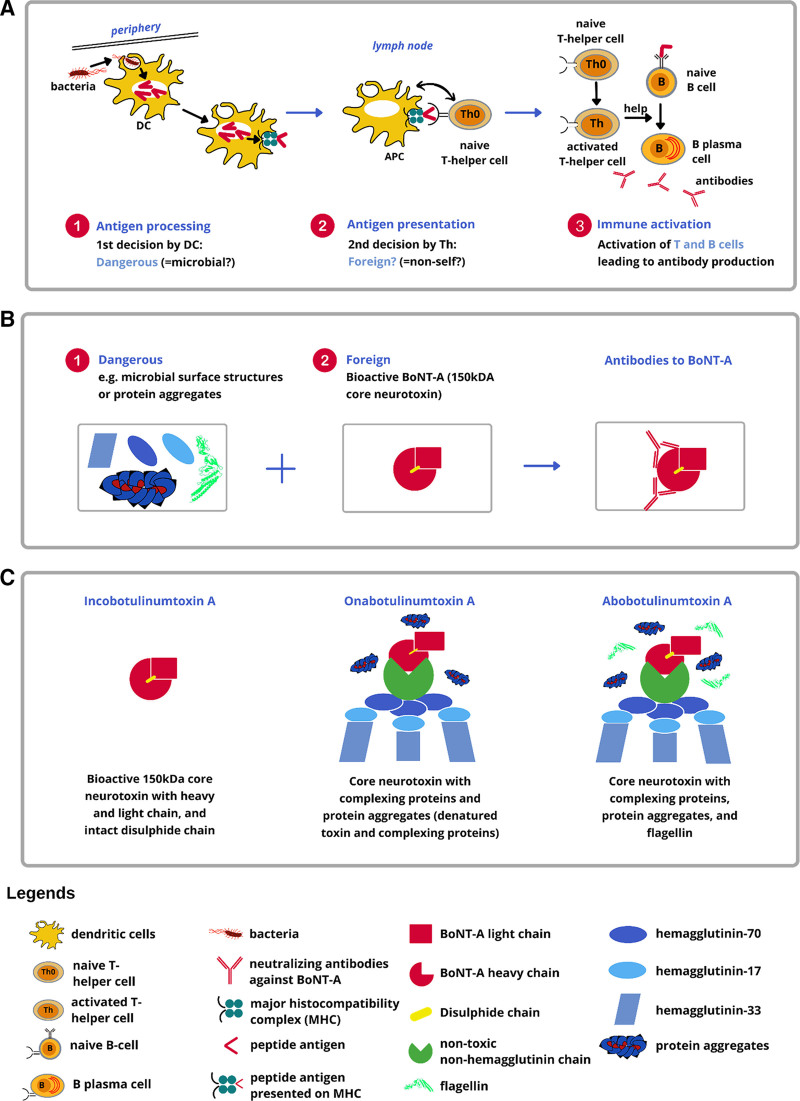Fig. 1.
BoNT-A treatment from the immunological perspective. A, Dangerous + foreign? Two key decisions controlling the immune response to biologics. The first decision involves DCs that determine whether or not a particle (eg, a microbe) is likely to be “dangerous.” DCs can recognize microbial surface molecules (eg, flagellin) as “danger signals.” Upon recognition of microbial danger signals, DCs will be activated and phagocytose the particle bearing the danger signal. Subsequently, these activated DCs migrate to lymph nodes and become professional APCs. The second decision involves naive T-helper cells that determine whether a particle is self or foreign. Upon encountering foreign antigen peptides presented by APCs along with co-stimulatory signals, naive T-helper cells become activated and undergo clonal expansion, leading to activation and clonal expansion of antigen-specific B cells. These mature into plasma cells that produce antibodies specific to the antigen that triggered the immune response. B, Development of BoNT-A neutralizing antibodies. C, Composition of FDA-approved BoNT-A formulations. Figure credit: Michael Martin.

